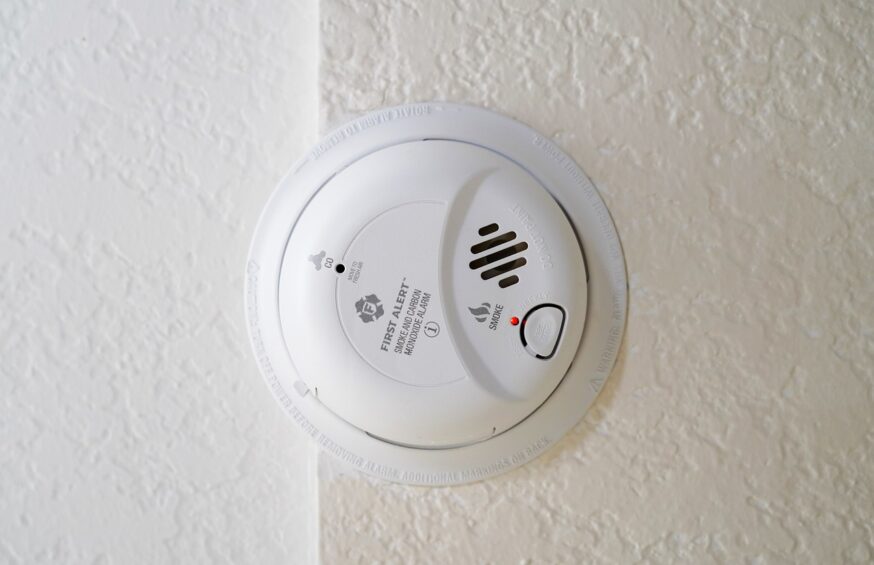Carbon monoxide poisoning is one of the major reasons behind accidents in the United States. The number of carbon monoxide-related accidents and deaths taking place in winter is significantly high when compared to other seasons of the year. Since carbon monoxide is an odorless, colorless, non-irritating, and tasteless gas, it is also called a silent killer. From this article, we will be sharing a few tips on how to protect you and your family members from carbon monoxide poisoning this winter.
What exactly is carbon monoxide poisoning?
You’ve probably heard of poisoning from carbon monoxide and may even understand what it is. However, if you’re a typical American homeowner, you may not know exactly what carbon monoxide is or why it’s deadly. You merely sometimes hear warnings about it and decide not to worry since “that would never occur in my household.”
That’s going to alter today. We’ll go over the subject in detail and provide you with the knowledge you need to safeguard your home, family, and yourself against this lethal gas. We’ll discuss what carbon monoxide really is, why it’s dangerous, where it may be coming from, and how to take precautions to safeguard your family’s safety.
Which Signs Indicate Carbon Monoxide Poisoning?
Although there is often no fever with carbon monoxide poisoning, the low-level symptoms of the condition are strikingly similar to those of the common flu. This is another factor contributing to the risk of poisoning from carbon monoxide. Since it’s more likely to happen in the wintertime, which is flu season, victims are probably going to ignore their symptoms. They might believe they have the flu and would feel better within a week or two.
Don’t assume you or someone you know has the flu if you start to exhibit these symptoms. Take the required actions to establish the truth. If it proves out to be the flu, it won’t harm, and if carbon monoxide poisoning is the cause, it may even save a life.
How Can Carbon Monoxide Poisoning Be Prevented?
It’s time to get pragmatic now that we’ve covered the symptoms and causes of poisoning with carbon monoxide. What can you do to reduce the risk and guard against injury to you and your family if normal, everyday items have the ability to let this toxic gas out into your home? The greatest advice for avoiding carbon monoxide poisoning is provided here.
- Install carbon monoxide detectors first
Other than being careful to operate your appliances properly, this is unquestionably the most crucial action you can take to avoid carbon monoxide poisoning. However, it is more complicated than just purchasing a few sensors and placing them around the home at random intervals. There are a few crucial places where you should put the carbon monoxide detectors for maximum effectiveness. Follow these recommendations for placing your detectors in order to build the finest safety net. - Maintain the Gas Dryer Filter
On the surface, it may not seem that a carbon monoxide poisoning problem with your dryer exists. However, you could be shocked. Lint buildup in the filter of a gas dryer in your house may increase the danger of carbon monoxide leakage.
All that lint not only creates a fire risk but also obstructs the vent, leaving the carbon monoxide generated by the machine with nowhere to escape. It is pushed out into the living area rather than being carefully filtered off in the vent. Fortunately, this can be fixed quickly. You shouldn’t have any issues if you frequently clean the dust out of your filter. - Learn the Symptoms and Signs by heart
A comprehensive list of potential symptoms is insufficient. Try to memorize this list for the maximum degree of safety. Remember that mild symptoms often resemble flu-like symptoms, at the very least. This way, if a person in your home starts displaying these symptoms, you’ll be aware that something more serious than the flu may be at play. - Create an emergency strategy with the family and conduct drills
Emergency exercises, such as fire drills, are often conducted in classrooms and many companies. Everyone is aware of the emergency plan, and you periodically go over the motions of the plan to keep everyone’s memory current.
It ought to be the same in your house. You should sit down and create your emergency plan so that your family is aware of what to do as soon as your carbon monoxide alarm sounds. Once a plan has been established, it is a good idea to practice it many times so that everyone is aware of what to do in the event of an emergency. Your emergency exercise should include topics like the need of leaving as quickly as possible and choosing a specific location outdoors where everyone may congregate for a head count. - Reduce Your Carbon Monoxide Exposure
Reduced exposure to carbon monoxide is one of the greatest methods to lower your chances of becoming sick from it. Installing appliances that are properly rated for safety performance and are UL-listed can help you achieve this. You may also take the caution of never letting your vehicle or lawnmower idle in your driveway, even when the door is open, and never operating combustion equipment like propane grills inside your house. Seal your wall between the home and garage to prevent fumes from the garage from entering your home for further safety.
Now you have a clear idea of what carbon monoxide poisoning is all about and how to keep you and your family members safe from it. Always keep in mind that the winter season leads you to an increased risk of carbon monoxide accidents. While keeping that in mind, you will need to take appropriate measures to minimize your overall risk of encountering carbon monoxide poisoning. Moreover, you should also know what to do when you find the presence of carbon monoxide within your home.

